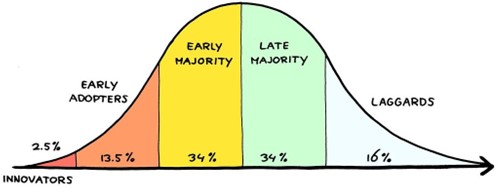“To Shape or Not to Shape?” Can a Company be too Selective in its Opportunity Pursuit Decisions? – June 26
Brian Seagrave
on
June 26, 2024
“We don’t bid opportunities if we haven’t shaped them. So, we don’t need to evaluate everything released on our vehicles.” Engaging with an agency’s potential users of your solution and their makers of decisions to buy is far better than bidding an opportunity you know nothing about. You want to learn about their primary cares, culture, the context for the solution, and their thoughts about alternatives and competitors — information that won’t be in the solicitation. And ideally you want to become a trusted advisor to them by studying their problems and engaging in a consultative development process in which you and the customer together define the key criteria for success, assess the alternatives to address them, and build a consensus among the decisionmakers. This is the best practice. When I’ve done it, I won those opportunities more often than not.
Some companies follow this rule exclusively and succeed. On January 2 each year, they set down a plan of all the opportunities they are going to bid in the year, and they stick to it. No “pop ups” allowed. It works because they bid multiple times the number of opportunities they need to win to achieve their growth target. So, if they lose some, and some get delayed, they can still hit their number. It is expensive, but it works.
Even for companies that can afford to be that selective, I would argue every company should be evaluating every opportunity announced on their vehicles. First, because agencies issue market surveys and RFIs that indicate possible future procurements and that represent opportunities to engage with an agency to have those consultative dialogs.
Second, especially this year, because agencies may move quickly to issue solicitations to commit new funding to address new starts. They may not have the time for consultative discussions; and, your business developer, however great he or she is, probably doesn’t have perfect knowledge of the agencies’ procurement plans.
Third: if you can have an automated 24x7x365 co-worker with unlimited capacity to download and read everything and tell you about the announcements of any opportunity that fit you, or that fit your competitors, why wouldn’t you want to know? That’s what NorthStar does for subscribers. At the least, you expand or maintain you knowledge about what your customers are doing. Better than that, you can detect opportunities to exceed your plan.
Besides all that, it is getting less expensive to bid pop-ups and easier to win them. Imagine this: you have a NorthStar subscription. It is ingesting and scoring opportunities from GSA MAS and your other vehicles hourly. At 10 AM you get an alert from NorthStar. You see a solicitation that has a high Druthers Score™ fit to your preferences. You open up NorthStar and can quickly scan a summary of the opportunity, see why it has that score, see that responses are due in two weeks, and that there are no “showstoppers” that keep you from being able to prime. You see the scope is for services at which your firm excels and that the task is for an agency where your protégé firm has a strong track record. You call them up and they are available to team. You need to close your customer intimacy gap, so you contact your representative at Deep Water Point & Associates and she says they have an agency expert who worked in that office until last year and knows the opportunity, the relevant operations, and the decisionmakers. You schedule a meeting with that expert to get briefed on the ground truth of the opportunity. You push the solicitation materials into your generative AI proposal writer. It produces a compliant outline and a first draft response. You pass parts of this out to your rapid response proposal team and over to your protégé to further develop. Five days later, your team has completed a proposal that demonstrates knowledge of the agency’s context for the solution, differentiates on the most important factors, is written in the agency’s language, presses all the right hot buttons, and ghosts the competition’s weaknesses. You are ready to submit way before the deadline and for a small fraction of the cost of the typical capture and proposal.
You can’t run a business depending on pop-ups. Neither should a business be certain it knows the best opportunities that will be released in the year ahead. Maybe a flexible model that does both opportunity shaping and responds to pop-ups is the fastest growth path.
If you’d like to work smarter, not harder to identify relevant opportunities, reduce costs, increase profitability, and win more contracts, schedule a demo today. We’d love to show you how GWAC NorthStar can help you crush agency deadlines and secure more business in federal government contracting.










